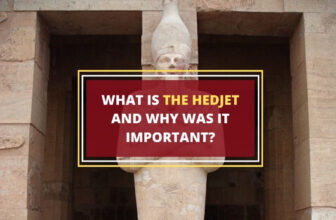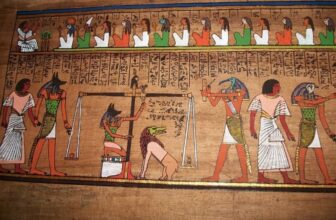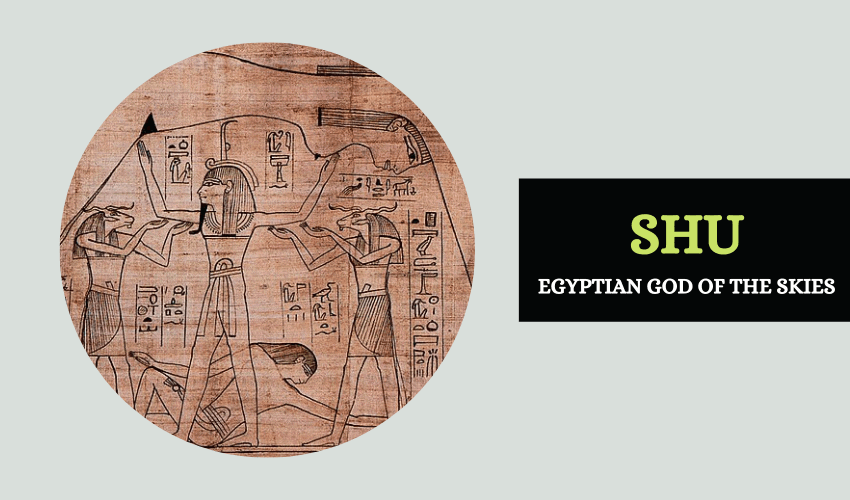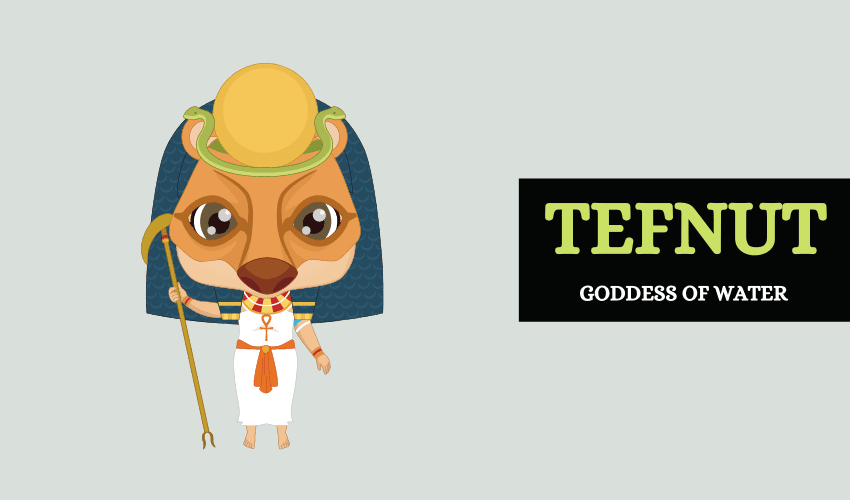
Table of Contents
In Egyptian mythology, Tefnut was the goddess of moisture and fertility. At times, she was also regarded as a lunar warrior goddess. She was one of the oldest and most important deities, being a goddess of water and moisture in a mostly desert civilization. Let’s take a closer look at her story.
Who Was Tefnut?
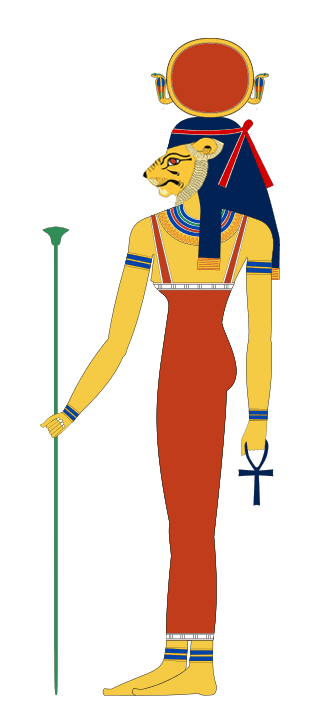
According to the Heliopolitan theology, Tefnut was the daughter of Atum, the cosmic creator and all-powerful sun god. She had a twin brother called Shu, who was the god of air and light. There are several different myths about how Tefnut and her brother were born and in every one of them, they were produced asexually.
According to the Heliopolitan myth of creation, Tefnut’s father, Atum, produced the twins with a sneeze while he was in Heliopolis, and in some other myths, he created them together with Hathor, the cow-headed goddess of fertility.
In alternate versions of the myth, the twins were said to have been born of Atum’s spit and Tefnut’s name is related to this. The first syllable of Tefnut’s name ‘tef’ is part of a word that means ‘to spit’ or ‘one who spits’. Her name was written in late texts with the hieroglyph of two lips spitting.
Another version of the story exists in the Coffin Texts (a collection of funerary spells that were written on coffins in ancient Egypt). In this story, Atum sneezed Shu out from his nose and spat Tefnut out with his saliva but some say that Tefnut was vomited out and her brother was spat out. Since there are so many variations of the myth, the way the siblings were actually born remains a mystery.
Tefnut’s brother Shu later became her consort, and they had two children together – Geb, who became the god of the Earth, and Nut, the goddess of the sky. They also had several grandchildren, including Osiris, Nephthys, Set and Isis who all became important deities in Egyptian mythology.
Depictions and Symbols of Tefnut
The goddess of moisture appears quite often in Egyptian art, but not as frequently as her twin brother, Shu. Tefnut could be easily identified by her most distinguishing feature: her lioness’ head. Of course, there were many Egyptian goddess who were often depicted with the head of a lioness such as the goddess Sekhmet. However, one difference is that Tefnut usually wears a long wig and a large uraeus serpent atop her head.
Tefnut’s head was symbolic of her power and also signified her role as a protector of the people. Although she’s often depicted this way, she’s also sometimes portrayed as a normal woman or a serpent with a lion’s head.
Aside from the lioness’ head, Tefnut had several other unique features that made her easy to distinguish from the other lioness-headed goddesses. She’s sometimes depicted with a solar disk which is a symbol of her father, Atum, resting on her head. Hanging over her forehead is the symbol Ureaus (the serpent) and on either side of the solar disk are two cobras. This was a symbol of protection since Tefnut was known as the protectress of the people.
Tefnut is also portrayed holding a staff and the Ankh, a cross with a circle on the top. These symbols are strongly associated with the goddess since they represent her power and the importance of her role. In Egyptian mythology, the Ankh is one of the most powerful and important symbols signifying life. Therefore, as the goddess of moisture, which all humans need to live, Tefnut was closely linked with this symbol.
Tefnut’s Role in Egyptian Mythology
As a major deity of moisture, Tefnut was involved in everything that had to do with water, including rainfall, dew, and the atmosphere. She was also responsible for time, order, heaven, hell and justice. She had a close connection with the sun and the moon and brought down water and moisture from the heavens for the people of Egypt. She had the power to create water out of her own body. Tefnut was also associated with the dead and had the responsibility of supplying water to the souls of the deceased.
Tefnut was an important member of the Ennead, who were nine of the original and most important deities in Egyptian mythology, similar to the twelve Olympian deities of the Greek pantheon. Being responsible for the maintenance of life, she was also one of the oldest and most powerful deities.
Tefnut and the Myth of the Drought
In some myths, Tefnut was associated with the Eye of Ra, the feminine counterpart of Ra, the sun god. In this role, Tefnut was linked to other lioness-goddesses such as Sekhmet and Menhit.
Another version of the myth tells of how Tefnut quarreled with her father, Atum, and left Egypt in a fit of rage. She journeyed to the Nubian desert and took with her all of the moisture that was present in the atmosphere in Egypt. As a result, Egypt was left completely dry and barren and this was when the Old Kingdom came to its end.
Once in Nubia, Tefnut transformed herself into a lionness and began to kill everything in her way and she was so fierce and strong that neither humans nor gods could go near her. Her father loved and missed his daughter so he sent her husband, Shu, together with Thoth, the baboon god of wisdom, to retrieve the goddess. In the end, it was Thoth who managed to calm her down by giving her some strange red colored liquid to drink (which the goddess mistook for blood, drinking it up immediately), and brought her back home.
On the way home, Tefnut returned the moisture to the atmosphere in Egypt and caused the flooding of the Nile by releasing pure water from her vagina. The people rejoiced and celebrated Tefnut’s return together with the band of musicians, baboons, and dancers the deities had brought with them from Nubia.
Many scholars believe that this story could refer to a real drought that may have resulted in the decline and finally the end of the Old Kingdom.
Cult and Worship of Tefnut
Tefnut was worshiped throughout Egypt, but her main cult centers were located in Leontopolis and Hermopolis. There was also a part of Denderah, a small Egyptian town, that was named ‘The House of Tefnut’ in honor of the goddess.
Leontopolis, the ‘city of lions’, was the ancient city where the cat-headed and lion-headed deities associated with the sun god Ra were all worshipped. Here, the people worshiped Tefnut as a lioness with pointed ears to distinguish her from the other goddesses who were also portrayed as lionesses.
Tefnut and Shu, were also worshiped in the form of flamingos as the children of the Lower Egyptian king and were considered to be mythical representations of the moon and sun. Whichever way she was worshiped, the Egyptians made sure to perform the rituals exactly as they should and made frequent offerings to the goddess since they didn’t want to risk making her angry. If Tefnut was angered, Egypt would surely suffer.
No remains of Tefnut’s temples have been found during excavations but numerous scholars believe that there were temples built in her name into which only the pharaoh or her priestesses could enter. According to certain sources, they had to perform a purification ritual in a deep stone pool before entering the temple of the goddess.
In Brief
Tefnut was a benevolent and powerful goddess but she did have a fierce and scary side to her. The people of Egypt were quite afraid of her since they knew what she was capable of when angered, like causing the drought which was said to have ended the Old Kingdom. However, she continues to be a feared, but highly respected and loved deity of the Egyptian pantheon.




